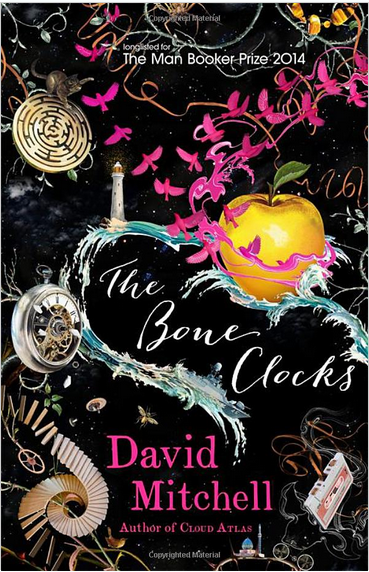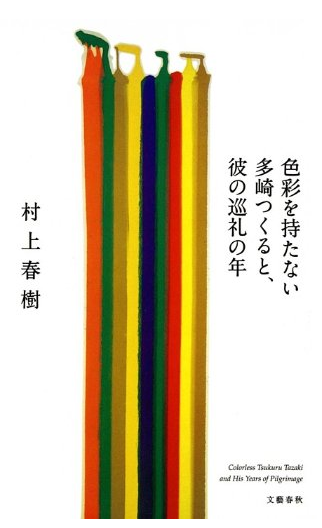Article Notes: Cults, Mitchell, and Murakami
A couple of weeks ago, I was pleased to see my article on cults in David Mitchell’s novels and Haruki Murakami’s 1Q84 appear in Novel: A Forum on Fiction. The article describes the fascination with, and conventions of representing, cults in contemporary fiction. Both authors have continued to publish novels since I completed the article in 2012, though, and I had worried the article would miss out on contributions from these novels. The article traces a set of conventions for representing “cults” through a network of interchanges between anti-totalitarian fiction, political theory, Cold War propaganada, and sociological and psychiatric examinations of coercive persuasion between the 1960s and 1990s. Relative to these conventions, Mitchell’s and Murakami’s self-consciously global and post-Cold War novels use the conventions of the cult’s social closure as a means of drawing attention to the contemporary world system’s complex and multiple networks of global exchange. “There’s no longer any place for a Big Brother in this real world of ours,” writes Murakami in 1Q84, a statement that drives the form of both 1Q84 and Mitchell’s novels.

UK edition of The Bone Clocks, 2014
Mitchell’s just-released novel, The Bone Clocks doesn’t, to my eye, do much develop the themes I discussed in my article (networks, global exchange, and cult-like social spaces that refuse the terms of global exchange). Rather, the new novel takes up the trans-historical theme of violence that was announced in Cloud Atlas’s mantra, “the weak are meat, the strong do eat.” We could call The Bone Clock’s’ Anchorites and Horologists “cults” whose values correspond to the strong and the weak of Cloud Atlas, but it doesn’t afford us much mileage on the book. As an examination of power and cruelty, the novel is often interesting, but its supernatural framework serves to simplify its depiction of global networks of power, which had been to me the most interesting part of the earlier novels. I thoroughly enjoyed parts of The Bone Clocks (and the running references to The Talking Heads’s Fear of Music), but I’ll continue to recommend The Thousand Autumns of Jacob de Zoet, Cloud Atlas, and Ghostwritten as Mitchell’s most exciting statements on the contemporary world system.
The Thousand Autumns of Jacob de Zoet, probably my favorite novel by Mitchell, is the one I regret not trying to squeeze into the article, which deals primarily with Ghostwritten and Cloud Atlas. The major theme and framework for Thousand Autumns is the interplay between cross-cultural encounter and the closure of social spaces, such that Jacob de Zoet’s closed-off trading port can become a topsy-turvy world of society gone wrong in the same way that the monastery at the novel’s center is revealed to be. Both spaces feature the conventions of cult representation I describe in the article, which included physical isolation, specialized language, and charismatic leadership. The novel is a particularly interesting examination of the forms of mutual incomprehensibility between these shut-off “worlds,” an interpretive impasse that that of the originary East-West encounter that the novel allegorizes.

Japanese edition of Colorless Tsukuru, 2013
Murakami’s Colorless Tsukuru is one of his quiet novels, in line with his realist works like Norwegian Wood. Cults warrant a brief mention in the novel (from the perspective of the business guru Tsukuru encounters), but for the most part, it’s simply a (beautiful and poignant) novel about contemporary loneliness. In the arc of Murakami’s career, Tsukuru seems like a self-conscious move away from the sprawling and fantastical worlds of Kafka on the Shore and 1Q84, even though it does include a rather gorgeous excursion into fantasy at one point. On 1Q84, I might have said a little more in my article — I’m fascinated by the way it condenses questions of agency and automatism into disturbing scenes involving immobile bodies — but I decided to limit myself to brief remarks, hoping to find work by experts in Japanese culture and language that deals with the novel’s specifics. (In that regard, I’m eager to check out Matthew Carl Strecher’s The Forbidden Worlds of Haruki Murakami, out this year from University of Minnesota Press.)
And one last comment on my own book: I’m primarily an Americanist, but Mitchell’s and Murakami’s novels both spoke to questions that had been nagging at me as I was working to turn the dissertation into a book. Just after this world-literature detour in the early summer of 2012, I drafted the chapter of my book that deals with the emergence of “cults” in U.S. culture and the topos of the cult in fictional and non-fictional representations of them. While I don’t repeat material between the book and this article, I trace a similar lineage between anti-totalitarianism in U.S. culture, research on “brainwashing” and coercive persuasion, and the ways the cult is imagined as a site of unfreedom in the U.S. In the book, I investigate the media phenomena of Ted Patrick, Patty Hearst, Jonestown, and the Unification Church, alongside the literary appeal of cults across high and low culture. In the U.S., the conceptual problems associated with the cult appear in crime dramas, made-for-TV movies, young adult literature designed to prevent adolescents from joining cults, and postmodern literary fiction that uses cults as a site for investigating questions about language, media, and identity (Don DeLillo, Christopher Sorrentino, Susan Choi, etc.). The dynamics of cult “automatism” (a term for the figuration of unfreedom in my book) seems to be a gripping, and sometimes urgent, topic to an extraordinary variety of audiences.